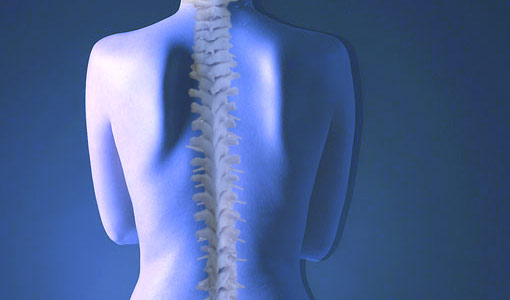 One of the main causes of pain and disease in the human body can be traced to improper alignment of the vertebrae in your spinal column. This is called a subluxation. Through carefully applied pressure, massage, and manual manipulation of the vertebrae and joints, pressure and irritation on the nerves is relieved and joint mobility is restored, allowing your body to return to its natural state of balance, called homeostasis. Put another way, when the bones in your spine are allowed to go back to their proper positions, the nerve energy can resume its normal flow and your body’s natural healing processes can function properly.
One of the main causes of pain and disease in the human body can be traced to improper alignment of the vertebrae in your spinal column. This is called a subluxation. Through carefully applied pressure, massage, and manual manipulation of the vertebrae and joints, pressure and irritation on the nerves is relieved and joint mobility is restored, allowing your body to return to its natural state of balance, called homeostasis. Put another way, when the bones in your spine are allowed to go back to their proper positions, the nerve energy can resume its normal flow and your body’s natural healing processes can function properly.
In general, proper chiropractic treatment of your body’s lumbar, or lower back, region, involves very little risk and the rewards can be significant.
Chiropractic or osteopathic manipulations can be especially helpful in relieving pain for facet joint injuries, osteoarthritis, and sacroiliac joint dysfunction, because such conditions respond well to mobilization. Moreover, scores of patients with chronic headaches, sinus problems, high blood pressure, ear infections, leg pain, arthritis, and many other illnesses have reported significant relief after chiropractic therapy.
Increasingly over the past few decades, the medical community has come to accept and recognize chiropractic care as a valid form of treatment for a variety of neuro-musculoskeletal conditions, and as a conservative treatment option for patients with lower back pain. Moreover, many medical doctors recognize a chiropractic diagnosis and accept it as the first line of treatment for functional disorders of the entire musculoskeletal system.
Studies by leading medical journals in recent years have confirmed the benefits of chiropractic care:
 Chiropractors diagnose and treat a broad range of physical conditions in patients with muscular, nervous, and skeletal problems, especially the spine.
Chiropractors diagnose and treat a broad range of physical conditions in patients with muscular, nervous, and skeletal problems, especially the spine.
Chiropractors make use of conventional diagnostic tests, such as X-rays, MRIs, and lab work, as well as specific procedures that involve manipulation by hand of various parts of the body. Chiropractors are best known for their ability to correct misalignments of the spine, which are called subluxations. But spinal manipulation is only a small part of what chiropractors do as part of an overall plan to manage and relieve pain and many kinds of ailments. Other kinds of treatments chiropractors are capable of providing include: